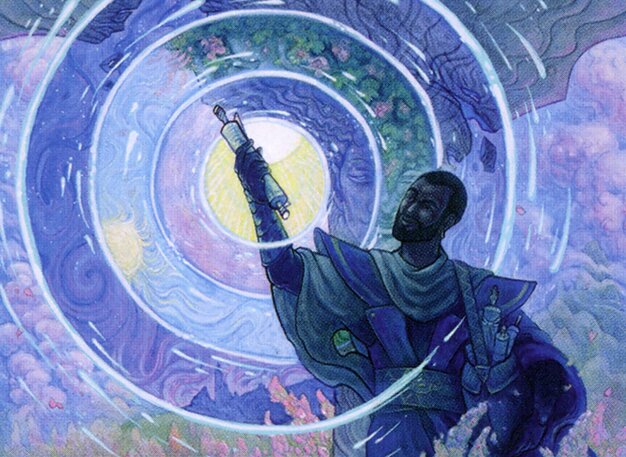 Art by Sam Guay
Art by Sam GuayThe Pitch
A peasant cube with rare lands. Cards are simple but powerful. Curves are low, removal is excellent, and games are fast. Mana fixing is abundant thanks to a double cycle of fetchlands. Synergies are lightly seeded - be creative in your drafting and deck-building!
This cube aims to provide a skill-testing environment with balanced colors and diverse decks. Three years of testing and tinkering has gone into achieving these goals.
Archetypes
Archetypes are seeded in three or more colors. This gives players more agency during draft and deck-building. For example, Esper having a flicker theme means that your WU, UB or BW deck can have an enter the battlefield theme, or that it can have pockets of synergy relating to such effects, or that it can splash a third color to power up such effects. Think about flickering Ravenous Chupacabra with Soulherder!
Decks are usually two colors but players have drafted mono color decks - enabled by the number of artifacts and hybrid cards - as well as three color decks, enabled by the abundance of fixing.
Format below is <Name of archetype> <Primary colors>/<Secondary colors>
Aristocrats 
 /
/

Artifacts 
 /
/

Blink 
 /
/

Counters 
 /
/
Go wide 
 /
/
Graveyard 
 /
/
Spellslingers 
 /
/

Features
Low curves: Decks are low to the ground, with no cards that have a mana value greater than 5. This contributes to games that are decision rich and skill-testing.
Good mana fixing: There are, on average, two fixing lands in each pack. Non-peasant lands are included because they are printed at rare for reasons that don't have anything to do with complexity. The cube includes the full cycle of shocks, triomes, bouncelands, and two cycles of fetchlands.
Simplicity: Spells are commons and uncommons only. R&D limits how complex commons and uncommons can be, but allows subtle strategic decision making to arise under the surface. A guiding principle is that reading the card should explain the card - the cube avoids cards that require outside knowledge, such as double-faced cards.
Mix of goodstuff cards and synergy cards: The goal is to have players draft decks and not just all the good cards, while avoiding the on-rails drafting where picks are automatic.
The ideal synergy card has a decent floor and fits is more than one archetype. Norn's Inquisitor is an example of this - 4 power and toughness for 4 mana is fine, especially since you don't have to pay all of it at once. But it also fits well in decks that deploy synergies involving +1/+1 counters, artifacts, going wide, or enter the battlefield effects.
The ideal goodstuff card is an iconic spell such Counterspell or Lightning Bolt that nonetheless fits into an archetype such as spellslingers.
House Rules
Rule: Each land with a name originally printed in the Dominaria United expansion has "Cycling  "
"
This rule helps to complete the cycle of bicycle lands that started with Irrigated Farmland. These lands synergies well with many cards, including fetch lands, bounce lands, counter spells, delve etc.
When Wizards of the Coast completes the cycle, I'll scrap this rule. Until then, each such land has a sticker that modifies the card. The wording for this rule, meant to work within the rules engine of the game, comes from cards such as City in a Bottle.
